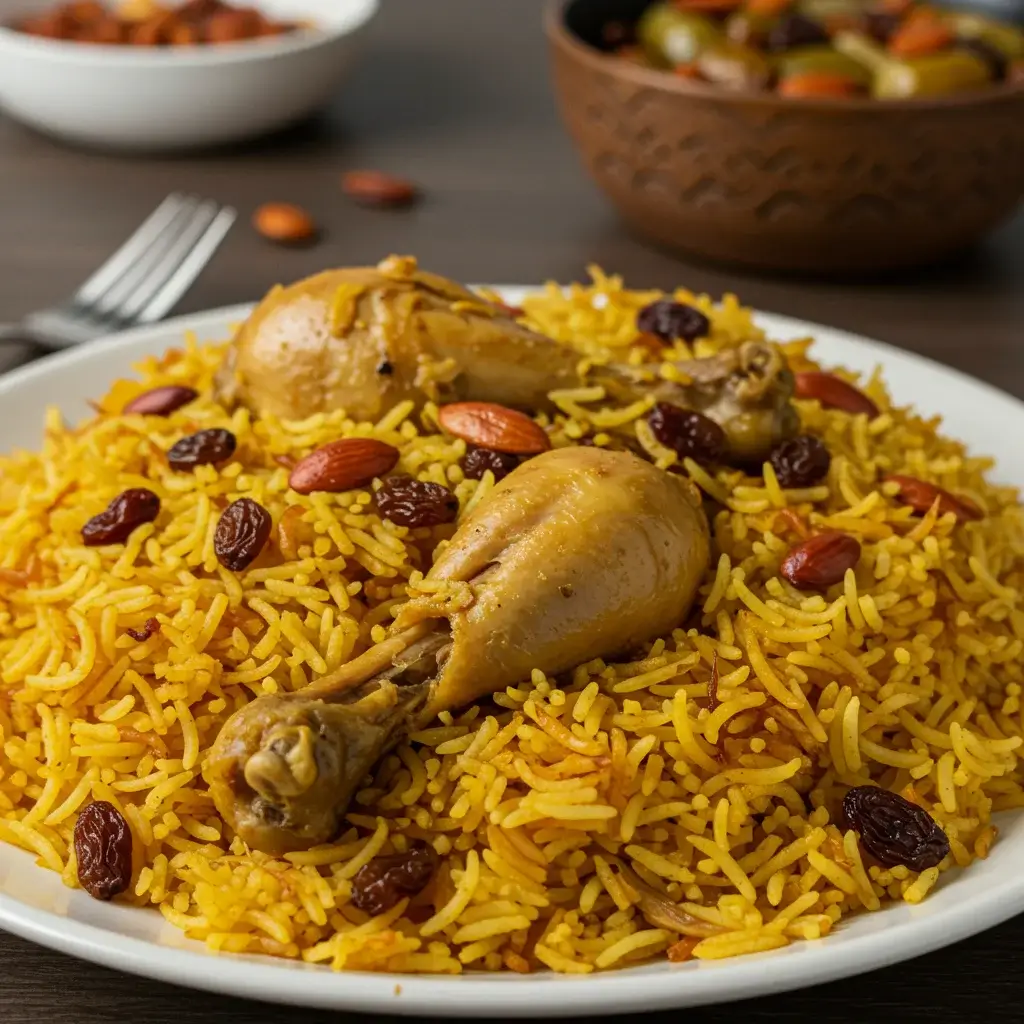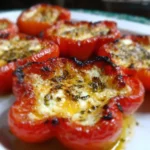Kabsa, a staple dish of Arabian cuisine, is a symphony of flavors and aromas that captivates the senses. This seasoned rice dish, often garnished with nuts and raisins, is traditionally prepared with spiced chicken, making it a hearty and satisfying meal. In this comprehensive guide, we’ll explore everything you need to know about preparing this delicious dish. Whether you’re an experienced cook or a culinary beginner, you’ll be able to bring the essence of the Middle East to your table.
Introduction
Kabsa is a popular dish in countries such as Saudi Arabia, Kuwait, and Qatar, often served during family gatherings and special occasions. Its origins are deeply rooted in Arabian culture, where rice and meat are central to the diet. The beauty of Kabsa lies in its versatility and the ability to incorporate a variety of ingredients and spices, making each preparation unique to the cook’s taste and preference.
The dish’s main components include rice, meat (usually chicken, lamb, or beef), and an array of spices such as cardamom, cloves, black lime, and saffron. Additionally, it is commonly garnished with toasted nuts and sweet raisins, further enhancing its complex flavor profile. This guide will walk you through the process of making a classic Arabian Kabsa with Chicken, ensuring that you achieve an authentic taste that’s sure to impress.
Ingredients
To prepare Arabian Kabsa with Chicken, you’ll need the following ingredients:
For the Chicken:
- 1 whole chicken (about 3-4 pounds), cut into pieces
- 2 tablespoons vegetable oil
- 1 large onion, finely chopped
- 4 cloves garlic, minced
- 2 tomatoes, chopped
- 2 tablespoons tomato paste
- 4 cups chicken broth or water
- 1 teaspoon ground cumin
- 1 teaspoon ground coriander
- 1 teaspoon ground turmeric
- 1 teaspoon ground cinnamon
- 1 teaspoon ground cardamom
- 1/2 teaspoon ground cloves
- 1/2 teaspoon ground black pepper
- Salt to taste
For the Rice:
- 2 cups basmati rice, rinsed and soaked for 30 minutes
- 2 tablespoons vegetable oil
- 1 large carrot, grated
- 1/4 cup raisins
- 1/4 cup slivered almonds, toasted
- 1/4 cup pine nuts, toasted
- 1/4 cup fresh parsley, chopped (for garnish)
Instructions
Follow these step-by-step instructions to make Arabian Kabsa with Chicken:
Preparing the Chicken:
- Season the Chicken: Rub the chicken pieces with salt and a mix of the ground spices (cumin, coriander, turmeric, cinnamon, cardamom, cloves, and black pepper). Allow it to marinate for about 30 minutes to let the flavors infuse.
- Sauté the Aromatics: In a large pot or Dutch oven, heat the vegetable oil over medium heat. Add the chopped onion and garlic, sautéing until they are soft and golden brown.
- Cook the Chicken: Add the marinated chicken pieces to the pot, skin side down, and sear them until they are browned on all sides.
- Simmer with Tomatoes: Stir in the chopped tomatoes and tomato paste, cooking for a few minutes until the tomatoes break down and blend with the spices.
- Add Liquid: Pour in the chicken broth or water, ensuring the chicken pieces are submerged. Bring the mixture to a boil, then reduce the heat to a simmer. Cover the pot and let it cook for about 45 minutes, or until the chicken is tender and fully cooked.
Preparing the Rice:
- Cook the Rice: In a separate pot, heat the vegetable oil over medium heat. Add the grated carrot and sauté briefly.
- Combine with Chicken: Stir in the soaked and drained basmati rice, ensuring it is well-coated with the oil and carrot mixture. Pour the chicken and its broth into the rice pot.
- Simmer the Rice: Bring the mixture to a gentle boil, then reduce the heat to low. Cover the pot and let the rice cook for about 20 minutes, or until the rice is fluffy and has absorbed all the liquid.
- Add Raisins and Nuts: Stir in the raisins, toasted almonds, and pine nuts, fluffing the rice gently with a fork.
- Garnish and Serve: Transfer the Kabsa to a large serving platter. Garnish with chopped fresh parsley before serving.
Nutrition Facts
Understanding the nutritional content of Kabsa can help you make informed dietary choices. The following estimates are based on a single serving (1/6th of the recipe):
- Calories: 550 kcal
- Protein: 30g
- Carbohydrates: 75g
- Fat: 15g
These values can vary based on the specific ingredients and portion sizes used. Kabsa is a rich source of protein and carbohydrates, providing energy and essential nutrients. The addition of nuts and raisins contributes healthy fats and natural sweetness.
How to Serve
Kabsa is not just a dish; it is an experience that brings people together, making it an ideal centerpiece for family meals or gatherings. This fragrant and flavorful rice dish, often accompanied by tender meat and a blend of aromatic spices, is best enjoyed hot, allowing its rich flavors to shine. Here are some suggestions for serving Kabsa that will enhance the dining experience and foster a sense of community around the table.
Traditional Style
One of the most authentic ways to serve Kabsa is on a large communal platter. This traditional method encourages a sense of togetherness and sharing, as guests are invited to help themselves. To create a stunning presentation, start by layering the Kabsa rice in the center of the platter, creating a small mound. Arrange the cooked meat—be it chicken, lamb, beef, or even fish—on top of the rice in an eye-catching manner. Garnish the dish with toasted nuts, such as almonds or pine nuts, and sprinkle fresh herbs like parsley or coriander over the top for a pop of color.
To enhance the communal dining experience, provide serving spoons or large forks so guests can easily help themselves. Pair this with traditional flatbreads, such as khubz or pita, which can be used to scoop up the rice and meat, making for a more interactive meal. The act of sharing from a single platter not only enhances the meal but also sparks conversation and camaraderie among diners.
Individual Portions
For a more formal presentation, consider plating the Kabsa individually. This approach allows for a refined dining experience, perfect for special occasions or dinner parties. Begin by spooning a generous serving of Kabsa rice onto each plate, ensuring that each portion includes a good balance of rice, meat, and spices. Next, arrange slices of the meat artistically on top of the rice or to the side for an elegant look.
To elevate the presentation further, garnish each plate with a sprinkle of toasted nuts, additional fresh herbs, and perhaps a drizzle of olive oil or a squeeze of lemon juice for added flavor. Incorporating small side dishes, such as a dollop of yogurt or a spoonful of cucumber raita, can enhance the dish’s flavors while adding a refreshing contrast to the spices. This elegant plating not only showcases the beauty of Kabsa but also allows guests to enjoy their meal in a more individualized manner.
Accompaniments
Kabsa is a versatile dish that pairs beautifully with a variety of side dishes, enhancing its flavors and creating a well-rounded meal. Consider serving it alongside fresh Middle Eastern salads to add brightness and crunch. Tabbouleh, a salad made with finely chopped parsley, tomatoes, mint, onion, and bulgur wheat dressed in olive oil and lemon juice, offers a refreshing contrast to the hearty Kabsa. Fattoush, a salad featuring mixed greens, vegetables, and crispy pieces of pita bread tossed in a tangy sumac dressing, is another excellent choice that complements the spices in Kabsa.
In addition to salads, yogurt-based dishes can provide a cooling effect against the dish’s spices. A simple bowl of plain yogurt or a cucumber raita, which combines yogurt with finely chopped cucumbers, mint, and spices, can be served on the side. This not only enhances the flavors of Kabsa but also provides a refreshing palate cleanser.
For those who enjoy a bit of heat, consider offering a small dish of spicy sauce or harissa for guests to drizzle over their servings. This allows diners to customize their meal according to their spice tolerance and personal preferences.
Final Touches
To round out the dining experience, consider serving a selection of beverages that complement the meal. Traditional drinks such as mint tea or Arabic coffee can enhance the flavors of Kabsa and bring a touch of authenticity to the meal. For a non-caffeinated option, refreshing beverages like lemonade or a fruit-infused water can provide a nice balance to the richness of the dish.
In conclusion, serving Kabsa is about more than just the food; it’s about creating an inviting atmosphere that promotes sharing and connection. Whether you opt for a communal platter or individual servings, pairing it with complementary sides and drinks will elevate the dining experience, making your Kabsa meal a memorable occasion for everyone involved.
Additional Tips
To elevate your Kabsa experience and ensure it is both delightful and tailored to your preferences, consider the following comprehensive tips:
Adjusting Spices
One of the quintessential aspects of Kabsa is its rich and aromatic spice blend, which can be customized to match your personal taste. Here are some ways to modify the spice levels:
- Spice Quantity: If you enjoy bold flavors, you might want to increase the quantities of traditional spices such as cumin, coriander, and cardamom. A higher concentration not only enhances the dish’s aroma but also deepens the overall flavor profile. For instance, instead of a teaspoon of cumin, consider using a tablespoon for a more pronounced taste.
- Balancing Heat: For those who prefer a milder flavor, simply reduce the amount of chili peppers or black pepper in your recipe. Alternatively, you can use milder spices like paprika or sweet chili powder to provide flavor without overwhelming heat.
- Experimenting with New Spices: Don’t hesitate to experiment with spices outside of the traditional Kabsa mix. Adding a pinch of saffron can introduce a luxurious element, while a dash of turmeric can provide an earthy richness and a vibrant color.
Vegetarian Option
Kabsa can be easily adapted for vegetarian diets, allowing everyone to enjoy this delightful dish. Here’s how to create a satisfying vegetarian version:
- Vegetable Substitutes: Instead of chicken, incorporate a variety of vegetables that not only add texture but also enhance the dish’s nutritional value. Consider using bell peppers, zucchini, eggplant, carrots, and peas. These vegetables can be diced and sautéed until tender before adding them to the rice, ensuring they soak up the flavors.
- Protein Alternatives: To enrich your vegetarian Kabsa, consider adding chickpeas or lentils. These legumes not only provide protein but also contribute a creamy texture that complements the spices beautifully.
- Broth Selection: Replace chicken broth with high-quality vegetable broth to maintain the depth of flavor. You can also enhance the broth with additional herbs and spices to ensure it complements the vegetable ingredients.
- Herbal Enhancements: Fresh herbs like cilantro or parsley can be sprinkled on top before serving, adding a fresh burst of flavor and a vibrant pop of color.
Storage and Reheating
Proper storage and reheating techniques are essential to maintain the integrity and flavor of your Kabsa. Here are some best practices:
- Storage: Allow your Kabsa to cool to room temperature before transferring it to an airtight container. This will help prevent condensation, which can make the rice soggy. Store leftovers in the refrigerator for up to 3-4 days.
- Freezing Options: If you have a larger batch and want to store it for a longer period, consider freezing portions of Kabsa. Use freezer-safe containers or resealable bags, and try to remove as much air as possible before sealing. Properly stored, it can last for up to 3 months in the freezer.
- Reheating: When it’s time to enjoy your leftovers, reheating can be done in several ways:
- Microwave: Place the Kabsa in a microwave-safe dish and cover it with a damp paper towel to retain moisture. Heat in 1-minute intervals, stirring occasionally until heated through.
- Stovetop: For stovetop reheating, place the Kabsa in a skillet with a splash of water or broth. Cover and heat over medium-low heat, stirring occasionally until warmed through. This method helps to revive the dish’s moisture and flavor.
- Avoid Dryness: To ensure your Kabsa doesn’t dry out during reheating, consider adding a little extra broth or water. This will help to rehydrate the rice and maintain the dish’s original texture.
By following these tips, you can enhance your Kabsa experience, making it a dish that is not only delicious but also perfectly suited to your taste preferences and dietary needs. Enjoy the journey of crafting this iconic dish, and don’t hesitate to make it your own!
FAQs
Q: Can I use other types of meat for Kabsa?
A: Yes, Kabsa can be made with lamb, beef, or even fish, depending on your preference. Cooking times will vary based on the type of meat used.
Q: Is Kabsa gluten-free?
A: Kabsa is naturally gluten-free, as it is made with rice. However, always check the labels of packaged spices to ensure they are gluten-free.
Q: Can I make Kabsa ahead of time?
A: Yes, Kabsa can be made a day in advance and reheated before serving. The flavors often develop and intensify when the dish is allowed to rest.
Q: How do I prevent the rice from becoming mushy?
A: To prevent mushy rice, make sure to rinse and soak the basmati rice before cooking. Avoid overcooking by keeping an eye on the rice as it simmers.
Conclusion
Arabian Kabsa with Chicken is more than just a meal; it’s a culinary experience that transports you to the heart of the Middle East. Its rich blend of spices, tender chicken, and fragrant rice make it a dish worth savoring. Whether you’re preparing it for a special occasion or a weeknight dinner, Kabsa is sure to delight anyone who tastes it. By following this guide, you can recreate this classic dish in your own kitchen, celebrating the vibrant flavors and traditions of Arabian cuisine. Enjoy your culinary journey with Kabsa!
Print
Arabian Kabsa with Chicken
Ingredients
To prepare Arabian Kabsa with Chicken, you’ll need the following ingredients:
For the Chicken:
- 1 whole chicken (about 3–4 pounds), cut into pieces
- 2 tablespoons vegetable oil
- 1 large onion, finely chopped
- 4 cloves garlic, minced
- 2 tomatoes, chopped
- 2 tablespoons tomato paste
- 4 cups chicken broth or water
- 1 teaspoon ground cumin
- 1 teaspoon ground coriander
- 1 teaspoon ground turmeric
- 1 teaspoon ground cinnamon
- 1 teaspoon ground cardamom
- 1/2 teaspoon ground cloves
- 1/2 teaspoon ground black pepper
- Salt to taste
For the Rice:
- 2 cups basmati rice, rinsed and soaked for 30 minutes
- 2 tablespoons vegetable oil
- 1 large carrot, grated
- 1/4 cup raisins
- 1/4 cup slivered almonds, toasted
- 1/4 cup pine nuts, toasted
- 1/4 cup fresh parsley, chopped (for garnish)
Instructions
Follow these step-by-step instructions to make Arabian Kabsa with Chicken:
Preparing the Chicken:
- Season the Chicken: Rub the chicken pieces with salt and a mix of the ground spices (cumin, coriander, turmeric, cinnamon, cardamom, cloves, and black pepper). Allow it to marinate for about 30 minutes to let the flavors infuse.
- Sauté the Aromatics: In a large pot or Dutch oven, heat the vegetable oil over medium heat. Add the chopped onion and garlic, sautéing until they are soft and golden brown.
- Cook the Chicken: Add the marinated chicken pieces to the pot, skin side down, and sear them until they are browned on all sides.
- Simmer with Tomatoes: Stir in the chopped tomatoes and tomato paste, cooking for a few minutes until the tomatoes break down and blend with the spices.
- Add Liquid: Pour in the chicken broth or water, ensuring the chicken pieces are submerged. Bring the mixture to a boil, then reduce the heat to a simmer. Cover the pot and let it cook for about 45 minutes, or until the chicken is tender and fully cooked.
Preparing the Rice:
- Cook the Rice: In a separate pot, heat the vegetable oil over medium heat. Add the grated carrot and sauté briefly.
- Combine with Chicken: Stir in the soaked and drained basmati rice, ensuring it is well-coated with the oil and carrot mixture. Pour the chicken and its broth into the rice pot.
- Simmer the Rice: Bring the mixture to a gentle boil, then reduce the heat to low. Cover the pot and let the rice cook for about 20 minutes, or until the rice is fluffy and has absorbed all the liquid.
- Add Raisins and Nuts: Stir in the raisins, toasted almonds, and pine nuts, fluffing the rice gently with a fork.
- Garnish and Serve: Transfer the Kabsa to a large serving platter. Garnish with chopped fresh parsley before serving.
Nutrition
- Serving Size: one normal portion
- Calories: 550
- Fat: 15g
- Carbohydrates: 75g
- Protein: 30g






